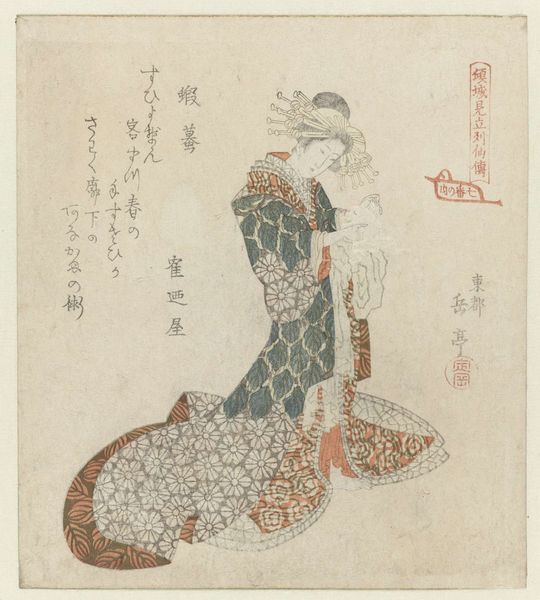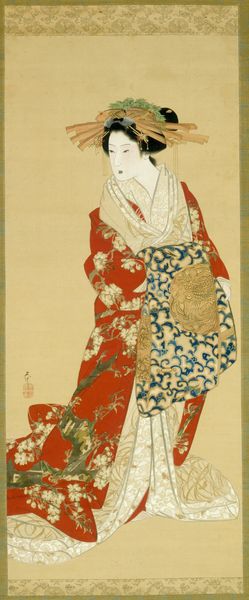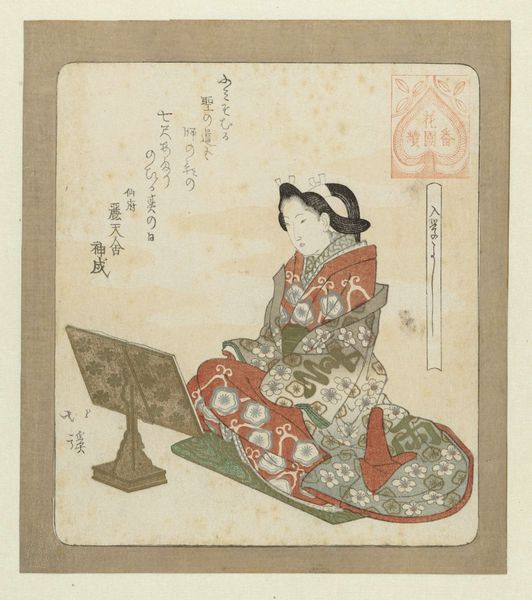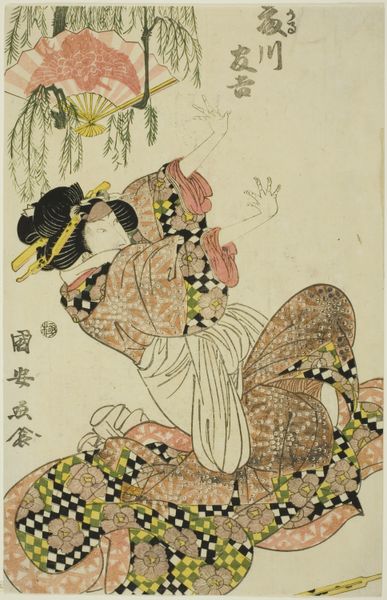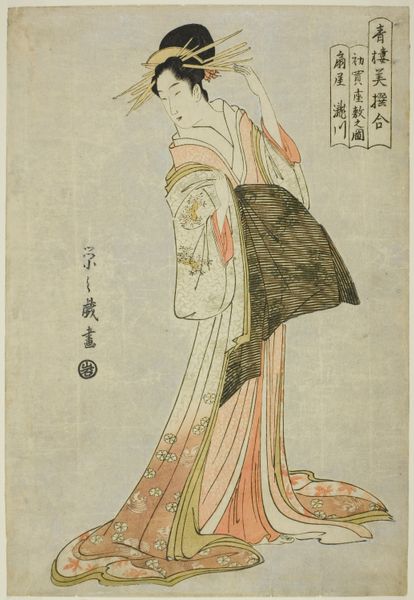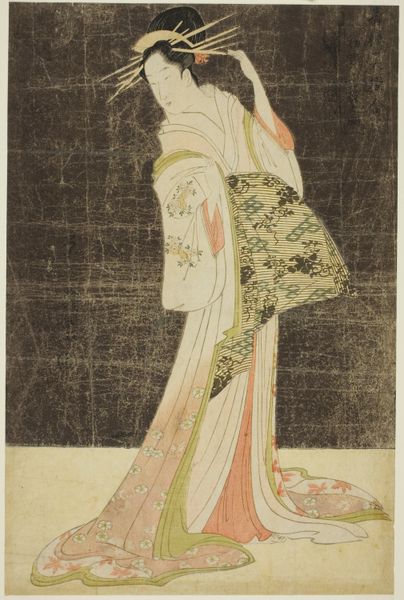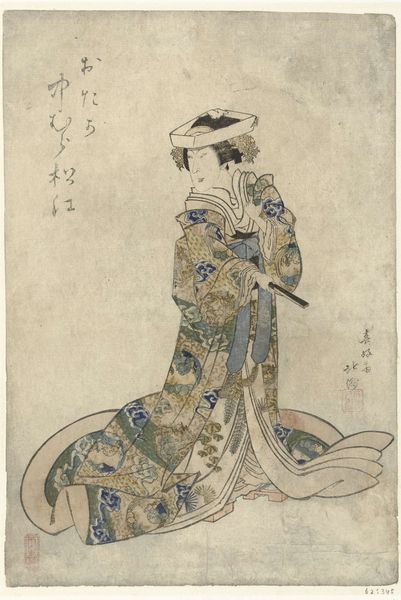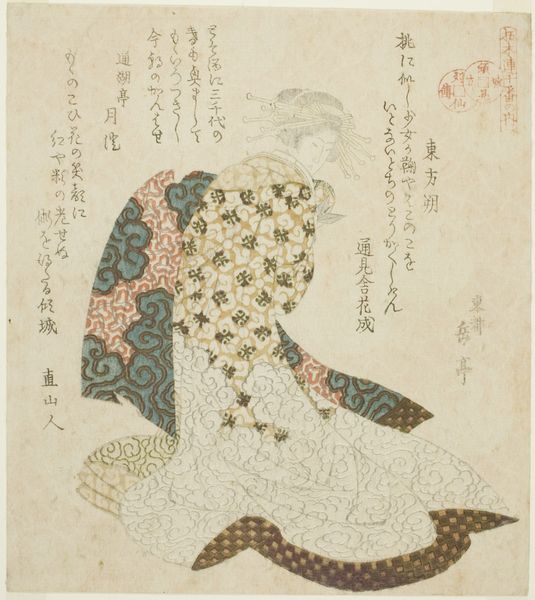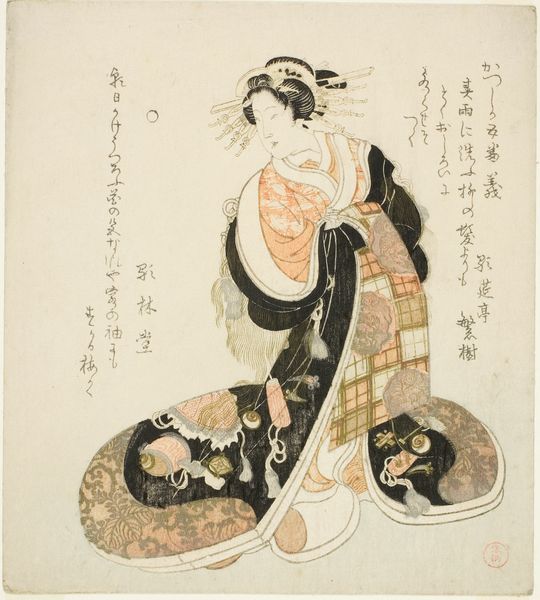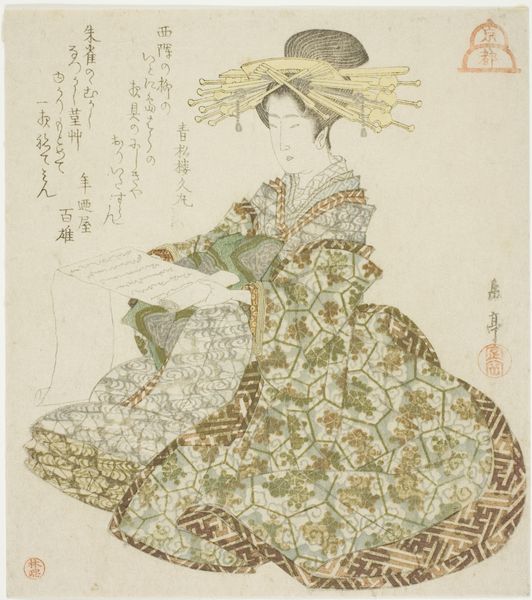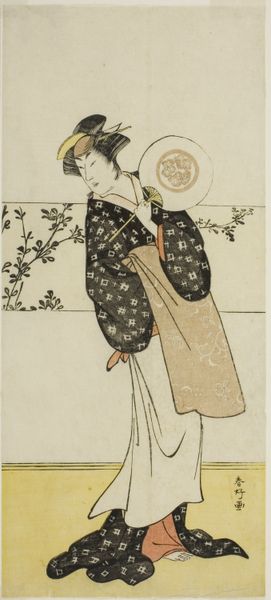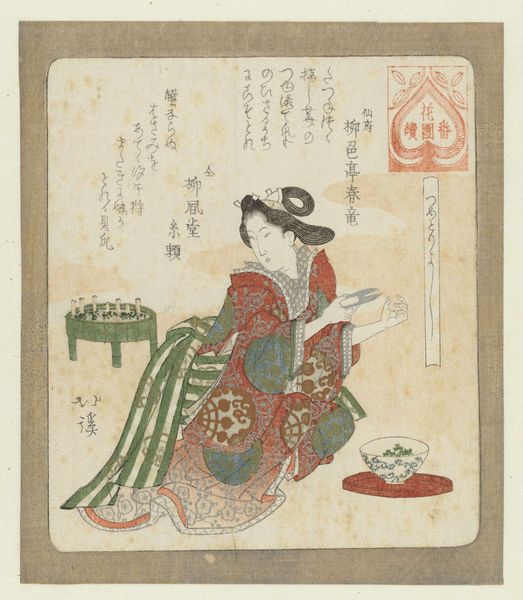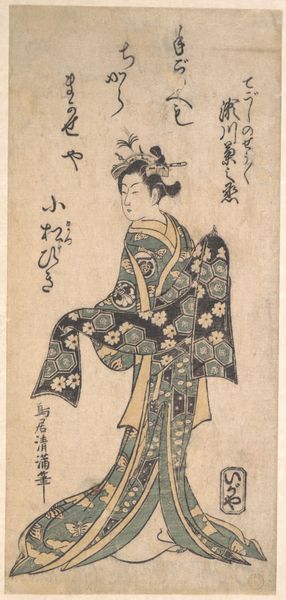
Liu Haichan (Gamma), from the series "Lives of Taoist Immortals Parodied by Courtesans - A Series of Seven (Keisei mitate ressenden, nanaban no uchi)" c. 1821 - 1822
0:00
0:00
print, woodblock-print
#
portrait
#
water colours
# print
#
asian-art
#
ukiyo-e
#
figuration
#
woodblock-print
#
japanese
#
genre-painting
Dimensions: 21 × 19.2 cm
Copyright: Public Domain
Curator: Welcome. We're standing before a Japanese woodblock print by Yashima Gakutei. The artwork, titled "Liu Haichan (Gamma), from the series "Lives of Taoist Immortals Parodied by Courtesans – A Series of Seven (Keisei mitate ressenden, nanaban no uchi)" dates from about 1821-1822. Editor: My immediate impression is one of subtle melancholy. The pale background contrasts beautifully with the figure's patterned robes, yet the downward gaze lends an air of introspection, even sorrow. The limited palette adds to the muted emotional register. Curator: Indeed. The figure is a courtesan portrayed in the guise of Liu Haichan, a Taoist immortal known for his detachment from worldly desires and association with wealth, represented by the string of coins he discovered. Here, she is occupied with a small object, obscuring this traditional iconography. Editor: So, Gakutei is playing with these layers of meaning, this visual code if you will. The figure's posture forms a dynamic interplay with the surrounding space—creating a triangular shape, emphasizing her controlled stillness. The patterning of her kimono creates intricate divisions. The composition overall seems highly structured and considered. Curator: Exactly. The image creates tension between expectation and reality. The parody invites a dialogue between sacred and profane, hinting perhaps, at the fleeting nature of beauty and pleasure within the floating world—Ukiyo-e. The symbols of immortality contrast starkly with her earthly profession. Editor: The materiality of the print itself speaks volumes. The delicate application of color suggests restraint—though the impression gives an intimate, textural experience through subtle gradations of tone. It also gives the viewer an appreciation for the skill and precision required to execute such a complex composition through the medium of woodblock printing. Curator: Thinking about cultural memory here, such images served as witty commentary for a sophisticated urban audience. They knew the stories and jokes, finding pleasure in their reflection, using images like mirrors or keys. Editor: A mirror, indeed, that shows us a glimpse into the complex dance of identity and representation that still fascinates us today. A very clever fusion of form and layered meaning. Curator: A provocative dance across the threshold of centuries, prompting continued dialogue between viewer and artwork, don't you agree? Editor: Absolutely, and one we’re delighted to explore more deeply with you in further stops.
Comments
No comments
Be the first to comment and join the conversation on the ultimate creative platform.
